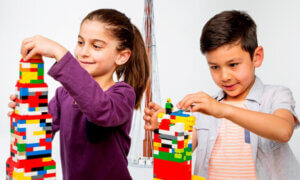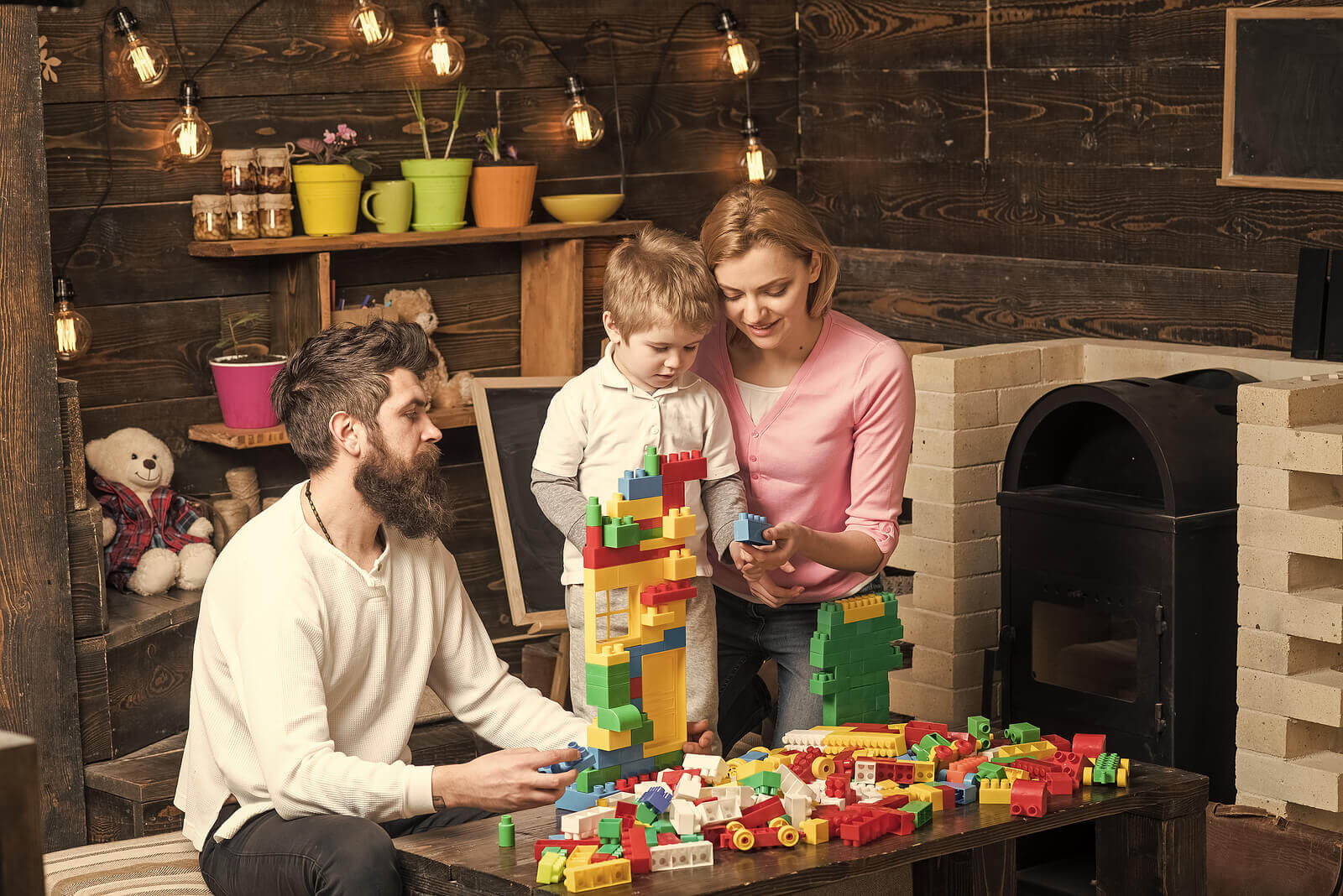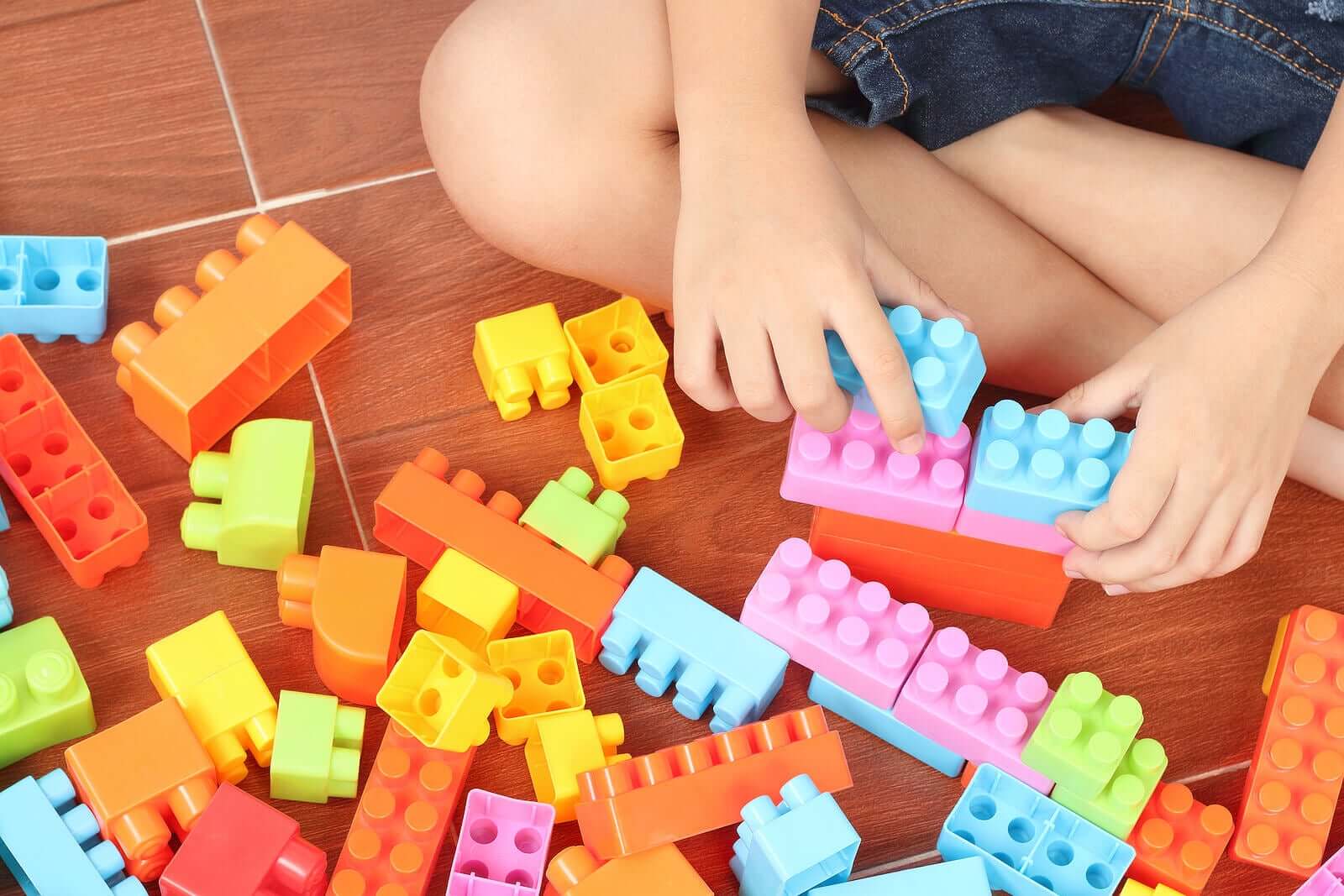LEGO Therapy for Children with Autism

Have you ever heard of LEGO therapy for children with autism? This therapy helps them to relate with others and is a great option for many children with this condition. They’ll be able to network and interact with other people while also participating in building LEGO.
Autism is also known as an autism spectrum disorder (ASD). People with this condition have trouble with social interaction and communication with the rest of the world. In addition, this disorder is very broad, and not all people are affected by it in the same way. Symptoms and abilities can vary greatly from one child with ASD to another.
Communication problems
It’s common for people with autism to have communication, understanding, and empathy problems. As a result, it’s difficult for them to express themselves normally, whether it be orally, gesturally, or through body language.

In addition, they may have learning and skill acquisition problems. This can result in uneven development compared to other children who are the same age. Also, they’ll have difficulty interacting with others. However, without generalizing too much, we should also mention that children with autism tend to have exceptional abilities in mathematics, art, music, and memory.
As is the case with any child, whether they have ASD or not, play can be the best way for little ones to learn and socialize. In fact, it’s also an extra challenge for children with autism because they have to relate to others while they play.
The great news is that parents often see really great results with LEGO therapy. But what is it? And how can LEGO therapy for children with autism help?
LEGO therapy for children with autism
Generally, young children like to build with LEGO, regardless of their age. This way of playing helps them enhance their creative thinking because they have to construct what they’re playing with. In addition, it also helps improve coordination, teamwork, and rule following when it comes to constructing a specific figure.
Also, it’s a predictable, simple activity that consists of repeating movements. Therefore, it’s a very interesting activity for children with autism and they’ll have a lot of fun being able to play while building with LEGO.
Your child can play with LEGO alone or with help, and children with autism can only work on them in small groups. That way, they’ll be able to work on a LEGO build with other kids, which will help them work on their interpersonal relationships without pressure or emotional blocks.
Changing roles
At first, your child can be the architect who’s in charge of thinking about how to carry out the project. Then, they can be the engineer who actually does the building and creates a successful project. In addition, there may be another group member who provides the LEGO pieces, another who uses them to build, and another who is the main helper.
Of course, these are just examples. In addition, you could try using rotating roles so that the activity becomes more fun and enjoyable for everyone. If you’re also taking part in the build, you can play the role of mediator in case there are differing ideas.
In addition, you can resolve any other conflicts that may arise between the children building the LEGO. Also, it’s necessary to keep the interactions positive and to give everyone adequate solutions for any conflicts. Your job is to be the guide and mediator whenever necessary.
That’ll help to make social learning fun for your child, which will help strengthen this skill. They’ll be able to enjoy interpersonal relationships and predictable activity, and they’ll feel good while doing so.

Teamwork with LEGO therapy: for children with autism
Ultimately, the activity consists of working in a group and taking on different roles:
- Engineer and architect (gives instructions).
- Supplier (provides the necessary parts and pieces for the build).
- Builder (the one who puts the pieces together and who follows the engineer’s/architect’s directions).
- Mediator (the adult).
In addition to being the mediator and guide, the adult will work with the group to encourage various aspects of communication. In addition, they’ll ensure that everyone is participating and that they’re using good problem-solving techniques when dealing with conflict among participants. As a result, the children’s socialization, communication and motor skills will improve. As you can see, LEGO therapy for children with autism is a great option that everyone will enjoy!
Have you ever heard of LEGO therapy for children with autism? This therapy helps them to relate with others and is a great option for many children with this condition. They’ll be able to network and interact with other people while also participating in building LEGO.
Autism is also known as an autism spectrum disorder (ASD). People with this condition have trouble with social interaction and communication with the rest of the world. In addition, this disorder is very broad, and not all people are affected by it in the same way. Symptoms and abilities can vary greatly from one child with ASD to another.
Communication problems
It’s common for people with autism to have communication, understanding, and empathy problems. As a result, it’s difficult for them to express themselves normally, whether it be orally, gesturally, or through body language.

In addition, they may have learning and skill acquisition problems. This can result in uneven development compared to other children who are the same age. Also, they’ll have difficulty interacting with others. However, without generalizing too much, we should also mention that children with autism tend to have exceptional abilities in mathematics, art, music, and memory.
As is the case with any child, whether they have ASD or not, play can be the best way for little ones to learn and socialize. In fact, it’s also an extra challenge for children with autism because they have to relate to others while they play.
The great news is that parents often see really great results with LEGO therapy. But what is it? And how can LEGO therapy for children with autism help?
LEGO therapy for children with autism
Generally, young children like to build with LEGO, regardless of their age. This way of playing helps them enhance their creative thinking because they have to construct what they’re playing with. In addition, it also helps improve coordination, teamwork, and rule following when it comes to constructing a specific figure.
Also, it’s a predictable, simple activity that consists of repeating movements. Therefore, it’s a very interesting activity for children with autism and they’ll have a lot of fun being able to play while building with LEGO.
Your child can play with LEGO alone or with help, and children with autism can only work on them in small groups. That way, they’ll be able to work on a LEGO build with other kids, which will help them work on their interpersonal relationships without pressure or emotional blocks.
Changing roles
At first, your child can be the architect who’s in charge of thinking about how to carry out the project. Then, they can be the engineer who actually does the building and creates a successful project. In addition, there may be another group member who provides the LEGO pieces, another who uses them to build, and another who is the main helper.
Of course, these are just examples. In addition, you could try using rotating roles so that the activity becomes more fun and enjoyable for everyone. If you’re also taking part in the build, you can play the role of mediator in case there are differing ideas.
In addition, you can resolve any other conflicts that may arise between the children building the LEGO. Also, it’s necessary to keep the interactions positive and to give everyone adequate solutions for any conflicts. Your job is to be the guide and mediator whenever necessary.
That’ll help to make social learning fun for your child, which will help strengthen this skill. They’ll be able to enjoy interpersonal relationships and predictable activity, and they’ll feel good while doing so.

Teamwork with LEGO therapy: for children with autism
Ultimately, the activity consists of working in a group and taking on different roles:
- Engineer and architect (gives instructions).
- Supplier (provides the necessary parts and pieces for the build).
- Builder (the one who puts the pieces together and who follows the engineer’s/architect’s directions).
- Mediator (the adult).
In addition to being the mediator and guide, the adult will work with the group to encourage various aspects of communication. In addition, they’ll ensure that everyone is participating and that they’re using good problem-solving techniques when dealing with conflict among participants. As a result, the children’s socialization, communication and motor skills will improve. As you can see, LEGO therapy for children with autism is a great option that everyone will enjoy!
All cited sources were thoroughly reviewed by our team to ensure their quality, reliability, currency, and validity. The bibliography of this article was considered reliable and of academic or scientific accuracy.
- Baron-Cohen, S. (2014) LEGO®-Based Therapy: How to Build Social Competence Through Lego®-Based Clubs for Children with Autism and Related Conditions. Editorial: Jessica Kingsley Publishers.
This text is provided for informational purposes only and does not replace consultation with a professional. If in doubt, consult your specialist.








